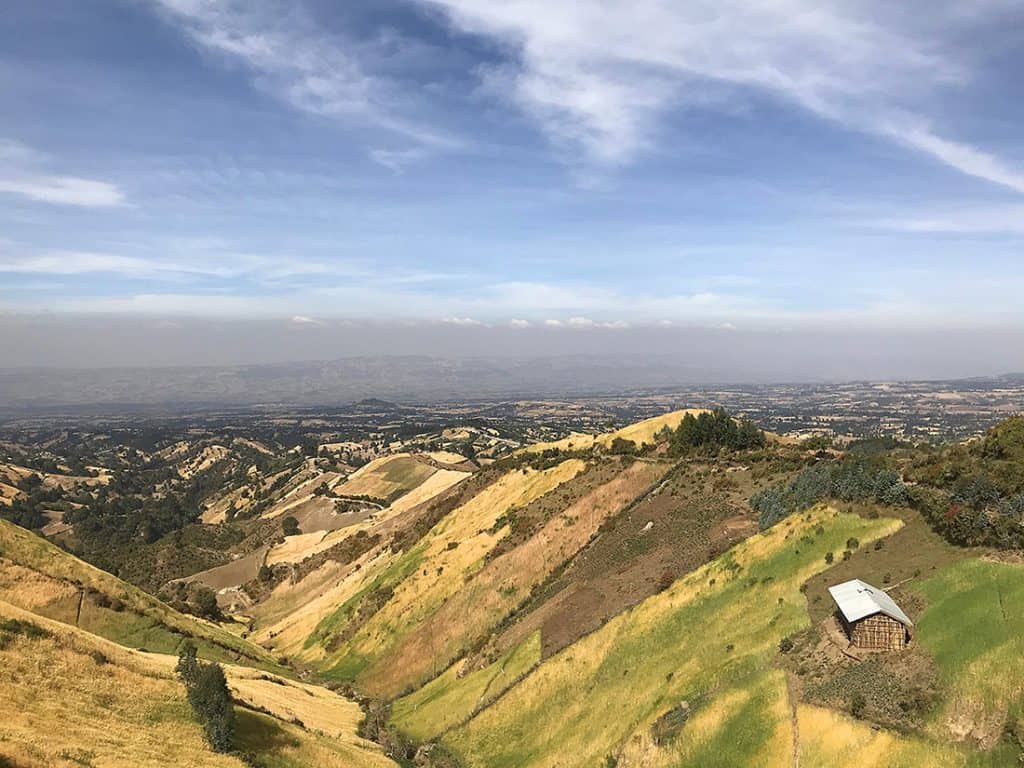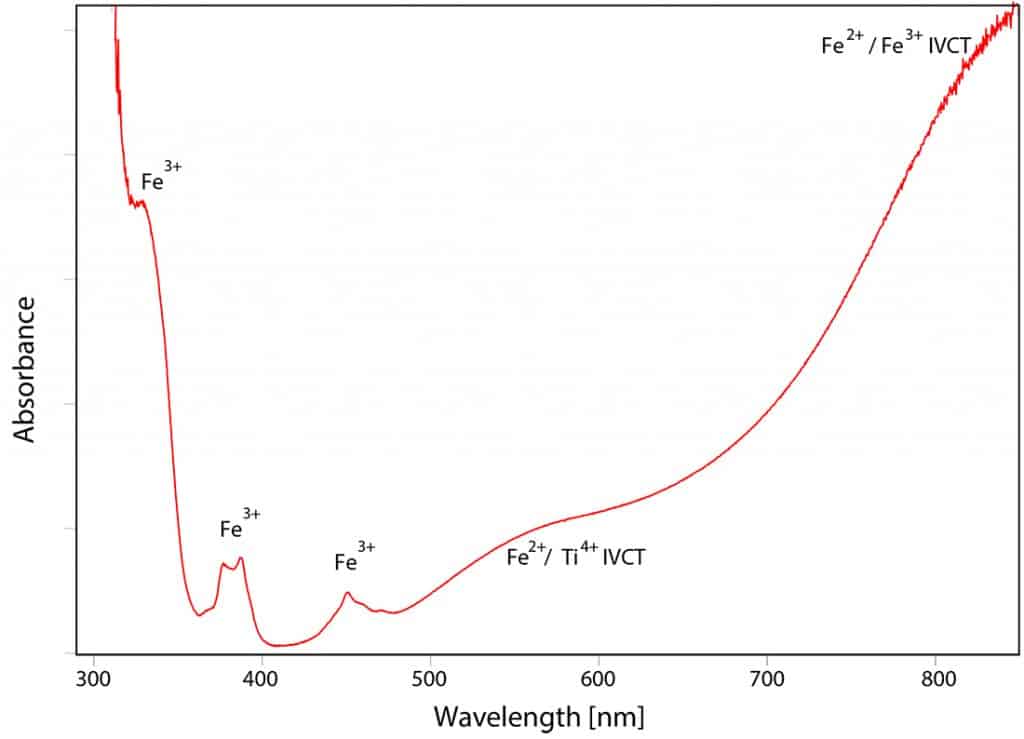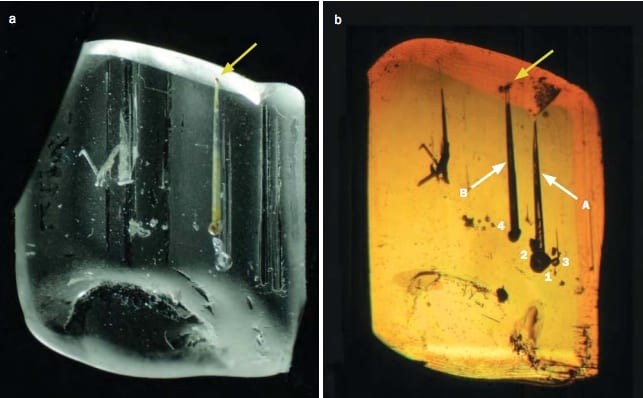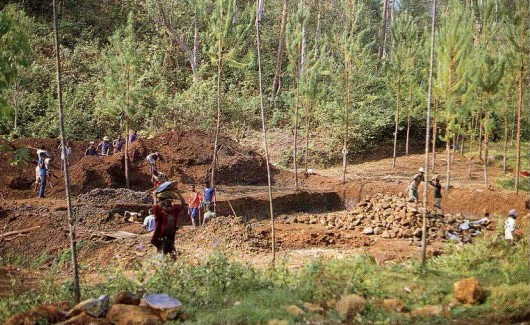
Ethiopia: New Source for Sapphires and Emeralds

Figure 1: Small series of emeralds from Ethiopia analysed recently at SSEF ranging in size from 1.3 to 10 ct and showing an attractive saturated green colour. Photo: V. Lanzafame, SSEF
by Dr. Michael S. Krzemnicki, first published in Facette 24 (February 2018)
Ethiopia is known in the gem trade since many years mainly as an important source of opal. A first deposit was discovered in 1994 near Mezezo, about 150 miles northeast of Addis Ababa in the northern part of the Shewa Province, mostly producing opal of brown body colour and often characterised by crazing and cracking due to dehydration (SSEF Facette 2011, No.18, page 7). Later, starting from 2008, a new and even more relevant opal deposit was discovered in stratified volcanic rocks near the town of Wegel Tena in the Wollo Province in the northern part of the country. This material definitively put Ethiopia on the gem trade map, as it is until today supplying the trade with large quantities of precious opal of partly excellent quality.
Ethiopia is geologically located at the northern section of the so-called Mozambique mobile belt – a major Proterozoic structural metamorphic unit along East Africa and a treasure trove aligning many exceptional gem deposits along this large scale geological structure. It is therefore not surprising that new gem deposits have been discovered in this area, and we are convinced further will come in the near future.
Emeralds from the South
In 2016 the first emeralds appeared in the gem trade which reportedly came from new deposits discovered near the town of Shakiso in southern Ethiopia. Soon after, some of these stones partly of high quality were submitted to the SSEF (Figure 1) and we were able to collect microscopic and analytical data and to integrate a number of these new emeralds from reliable sources and a field trip as reference material into our SSEF gemstone collection.
These new emeralds from Ethiopia are in many aspects very similar to emeralds from other mica-schist related deposits, e.g. in Zambia (Kafubu) and Brazil, but clearly distinguishable from Colombian or Afghan emeralds. They often show rectangular two- to multiphase fluid inclusions (Figure 2), fine hollow channels parallel to the optical axis and dark brown mica (biotite) and some prismatic amphibole. The analysed absorption spectra are consistent with iron-rich emeralds from mica- schists in Zambia and Brazil, with a distinct absorption band in the near- infrared range due to iron. Origin determination of these new emeralds at SSEF is mainly based on a detailed trace element analysis (Figure 3).
As with emeralds from other sources, material with fissures is commonly filled and both oil and artificial resin have been identified in emeralds from this new source at SSEF.

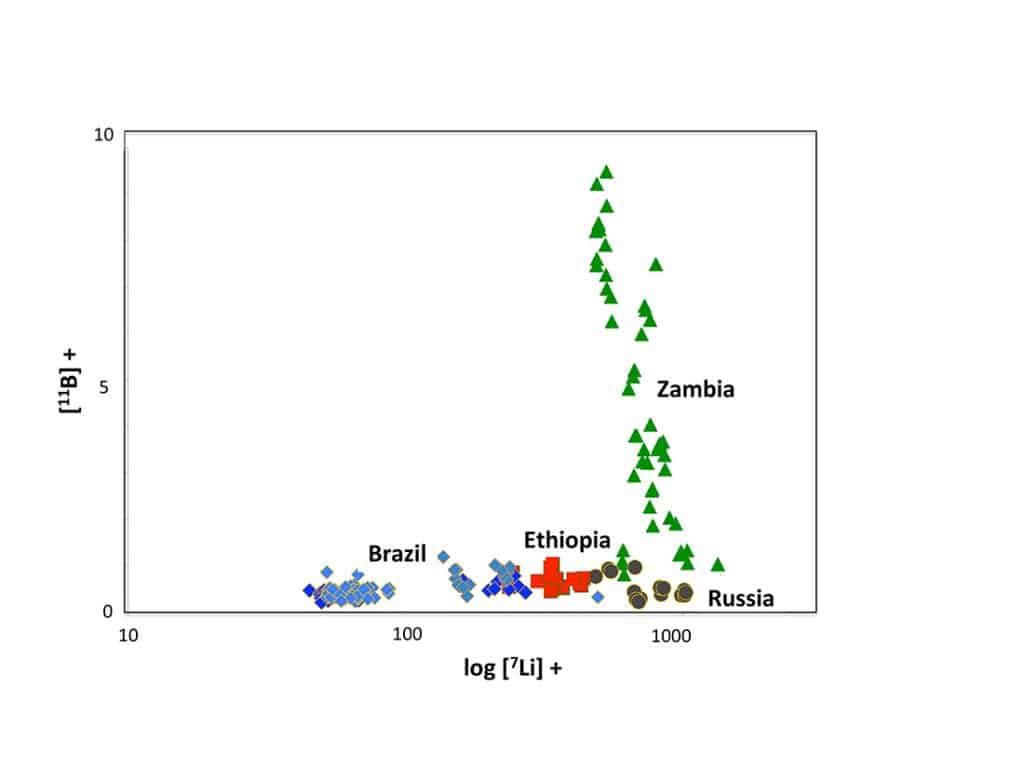
Sapphires from the North
Apart from this new find in the south, at nearly the same time a new sapphire deposit emerged from the remote Ethiopian Highlands near the city of Aksum in the Tigray region of Ethiopia, close to the border to Eritrea. These sapphires are found in dusty gravel layers of a secondary deposit related to alkali basaltic rocks produced at the northern end of Africa’s Great Rift Valley.
Reportedly, this new sapphire deposit produces sapphires sometimes of impressive size and quality. However – as very typical for basaltic sapphires, they are often rather dark (or even too dark) blue, and as a consequence need to be heated (in Sri Lanka or Thailand) to modify and improve their colour and clarity.
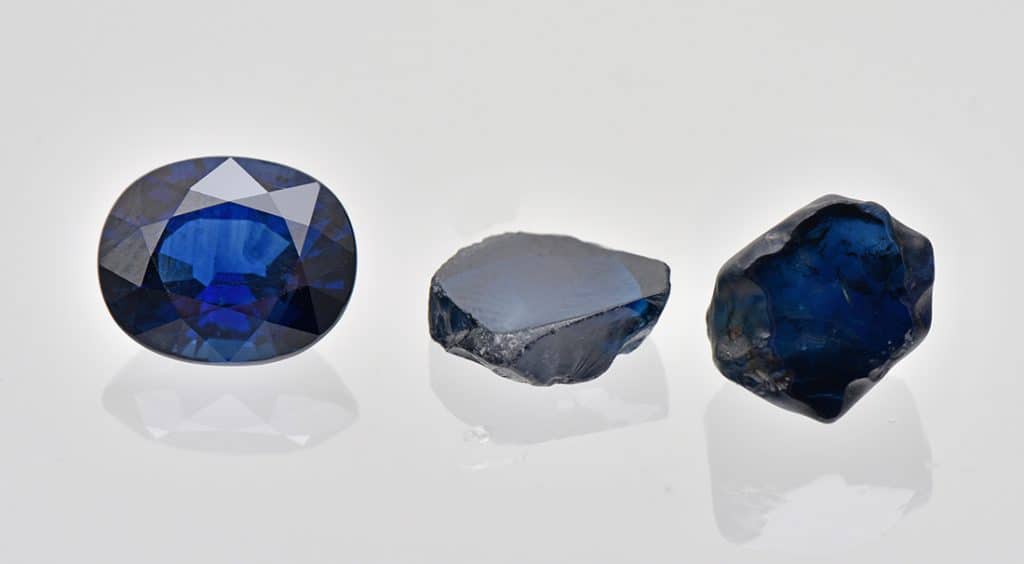
The SSEF has received a selection of these sapphires for our reference collection and has analysed them in detail. They show great resemblance in inclusions, spectroscopic features and trace element concentrations with sapphires from other basaltic sources, e.g. from Rwanda (also bound to the African-Rift system), Nigeria, Thailand, Cambodia, to name a few. The separation of this new material from sapphires of classic metamorphic origin (e.g. Kashmir, Sri Lanka, Burma) is straightforward using microscopy, absorption spectroscopy, and trace elements.
